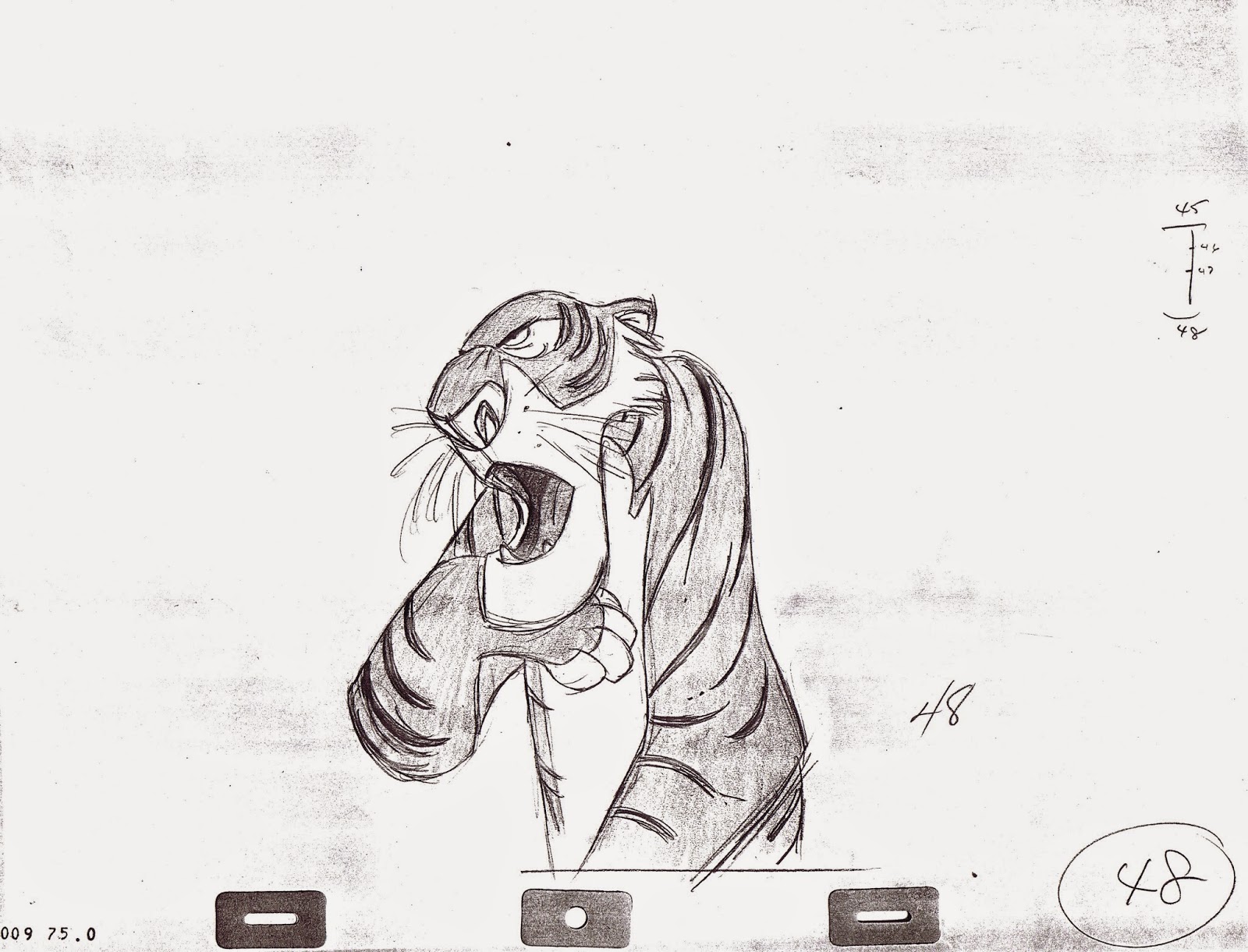I know, this sounds like advice from some health lifestyle guru.
During my online talk last Saturday I mentioned the importance of having your character breathe.
Particularly during a quiet moment, before he or she begins to talk, showing the shoulders go up and then down again during the exhale/dialogue, adds a tremendous amount of life.
The fact that you can have your drawn character (or CG model) fill its lungs with air makes everybody believe that this is a living being. Breathing is the most basic human (or animal) trait, and is instantly connected to having a soul.
For the most part animating a breath is pretty simple. The shoulders rise, the head moves along, and the chest might come forward. (This pose should last for at least eight frames) Usually the face doesn’t need to face downward, then upward for overlapping action in a subtle move like this one.
It is a good idea though to move the head upward during the exhale to contrast the the shoulders downward motion.
If the sound of the inhale is in the voice track, I would definitely animate it and make it a part of the overall acting. If there is silence, but you have a little pause, I would still try and show an inhale.
You are always looking for moments that add real life, and this is one of them.
Milt Kahl animated these inhales very convincingly within different moods.
Shere Khan is mocking the vultures singing after taking a deep breath.
Medusa becomes furious when she talks to Snoops on the phone.
Wart sighs in respond to Merlin’s encouraging words.
PS. I'll answer all of your questions in connection with the "Virtual Animators" post shortly.











I really liked how you touched on this during your master class. It was a really cool insight into those characters that could be easily missed but add so much to them.
ReplyDeleteIt reminds me of the lioness in "The tale of the Fox" from Ladislas Starevich. You can tell how much she loves the cat just by watching her breathe while he is singing.
ReplyDeletehttps://www.youtube.com/watch?v=gcznvlBTQFk
I really enjoy your posts Andreas ! Please keep posting great artworks and thoughts.
a very useful information
ReplyDeletePocahontas is a good modern example of this, IMHO.
ReplyDeleteSimply breathtaking.
ReplyDeleteYes, I said that.
So interesting fact, to give natural movement to the character through breathing. Thank you! I will practice ^_^
ReplyDeleteOh! and great to see more of these beautiful Milt Kahl's sequences. Thanks for share.
So obvious, yet we all forget. Thanks Andreas.
ReplyDeleteBTW - I see that most of your Shere Kahans are shaded in (colored pencil?). Did Milt Kahl do this as a rule for clarity, or did someone else?
Milt did this, so the pencil test would read more clearly. He would probably shade only one, his assistant would do the rest.
DeleteThis also served as information for ink & paint to clarify which shapes needed to be in orange.
Interesting. I would have thought that would get in the way of the xerography process. But maybe these drawings were considered the "roughs" and his assistant was drawing the final on-screen versions then? Thanks again, Andreas :-)
DeleteOops - never mind. Now that I look at the drawings again, of course they are the roughs. But Milt Kahl roughs looks so finished :-)
DeleteThese are actually the drawings that were xeroxed on to cels.
DeleteMilt's assistant cleaned up his roughs a little on the original drawings. They called this "touch up" instead of clean up.
The shading you see here was done with a blue pencil, and blue was not picked up by the xerox process.
Very eloquently explained!
ReplyDeleteHi Andreas,
ReplyDeleteI know your interests about animals and particularly big cats.
I sculpted a Big Cat Anatomy Model and I've started a Kickstarted campaign.
If you are interested, go to:
https://www.kickstarter.com/projects/1913733791/big-cat-anatomy-sculpture-lioness
Thanks
What a beautiful model, Gabriele. I tried to purchase one, but had technical problems. I'll figure it out. Thanks.
DeleteA 2014 study published at Siggraph explored the exact (and subtle) details of movement that happen while breathing: http://gurneyjourney.blogspot.com/2014/08/how-do-we-move-when-we-breathe.html
ReplyDeleteThat particular Shere Khan sequence is one of my favorites. The level of subtlety in expression he achieves in those drawings is incredibly theatrical! And the "boo" he gives to the vultures a little after this with the impeccable nostril and eye movements is truly icing on the cake.
ReplyDeleteAndreas, have you seen this by chance? It's an amazing animation of Scar and Nala of The Madness of King Scar by a group of fans and it's spot on! It could perfectly fit along the actual movie, I was speechless:
ReplyDeletehttps://vimeo.com/106743683